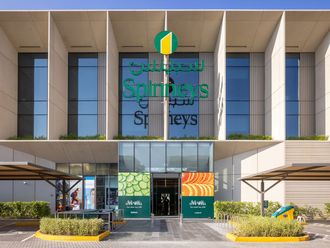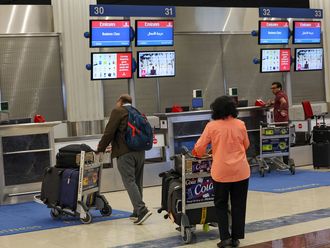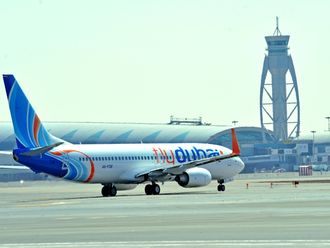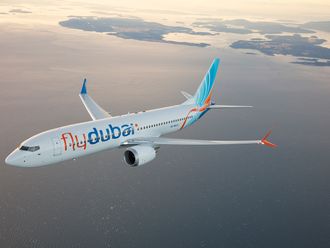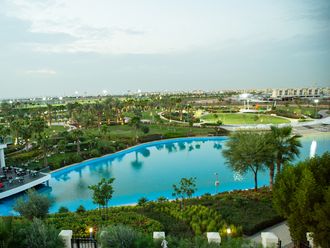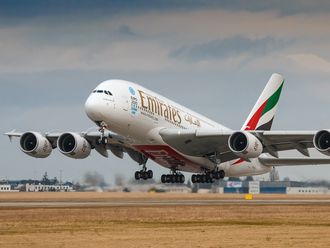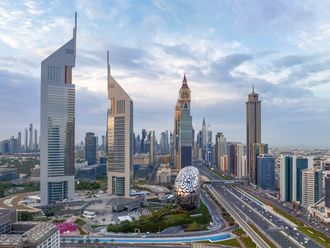In a world awash with oil, having another rig ready to bring another production well online is not a welcomed sight with a record of nearly three billion barrels of crude in storage around the globe.
Drilling is nearly complete in West Quroon’s biggest field of five in South Azadegan. But after years of sanctions, it’s obviously a struggle, with a patchwork of old and rusty equipment.
CNN was the first foreign television crew allowed into the Iran’s largest oil find in the last three decades. One cannot overlook an extraordinary turn of fate as we toured the marshlands in a convoy of vans and SUVs, considering this corner of Iran was once a battleground in the eight-year war with Iraq.
It is fascinating to witness first hand how Iran has had to survive. On the platform where we were with a production team, the National Iranian Oil Company is using a Chinese built rig, but it is American technology at the core purchased before the sanctions took hold.
I toured the facility with Mahmood Marashi, an American educated project manager, who cannot wait for the day the shackles of Western-led sanctions are removed and Iran can re-enter the global market. “We hope that after the sanctions are lifted we can move faster,” said Marashi. “Of course the quality is very important,” making reference to the tools he is forced to use now.
A kilometre down the road, a new oil handling facility is going up, but with pillion drivers that are clearly from a different era as black smoke billows from the old machinery.
Crews are working like there’s no tomorrow, hoping to quadruple production in the West Quroon region to a hefty 700,000 barrels a day in 2020 from just 160,000 barrels today. Project managers tell me that oil ministry officials ask for progress reports every two weeks to insure they stick to strict timelines.
At 60 billion barrels of proven reserves, West Quroon alone has more oil than Africa’s largest producer Nigeria.
Abdulreza Hosseinnejad, Managing Director of National Iranian Oil Company, described it as “massive”, but admitted “We have to work hard in order for it come to reality,” adding, “We are used to hard conditions ... I hope that after sanctions that life will be much easier.”
West Quroon, making up more than a third of Iran’s proven reserves at 157 billion barrels, is at the centre of Iran’s ambitious agenda for the next year. Petroleum Minister Bijan Zaganeh will formally present his plan to the Opec Secretariat in Vienna on December 4. But on the 15th floor of his ministry in central Tehran, he laid out his game plan.
Once given the green light, he will add a half million barrels a day immediately, another half million by the start of Iran’s fiscal year in March, with a firm goal to add another half million barrels by the end of 2016.
This would mean Iran’s daily output would be back up to 4.3 million barrels a day, matching a pre-sanctions high back in 2008, challenging its neighbour Iraq for the second position within Opec.
“We are one of the oldest producers in the world, the oldest producer in the Middle East. Can we lose our share in the market? It is not fair,” the minister declared alluding to domestic pressures to deliver.
Two floors down, Amir Zamaninia, Deputy Minister of Petroleum for International Affairs, pointed to a map in his office with large green circles for oilfields and even larger red ones indicating gas finds.
“All of these need to be developed. We need more than a few major companies to partner with to develop these fields,” said Zamaninia, “What we need is capital, technology and to some degree project management.”
That ability to attract international oil companies will all depend on how generous the terms will be when Iran rolls out 50 oil, gas and petrochemical projects worth $185 billion at the end of the month. I am told contracts can extend up to a quarter century with favourable production sharing rights.
Iran’s re-emergence will clearly tip the balance within Opec, and what some call an overly ambitious plan may force Saudi Arabia to make way for its regional arch-rival.
“If the Saudis decide to change tack all they have to do is to take one- to one-and-a-half million barrels a day from the market and the balance will come back, said Fereidun Fesharaki, Chairman of the global consultancy FACTS Global Energy.
He insisted that the Iranians will not try to flood the market, but wants to prove to the world that it can build up capacity to nearly six million barrels a day by 2020.
Back in the fields, the team of engineers and project managers illustrate the steep hill they need to climb in terms of development over the next four years. Phase 1 in West Quroon sees 348 wells in production, which will double by 2020, but clearly not without the help of US and European oil giants.
The writer is CNN’s Emerging Markets Editor.


